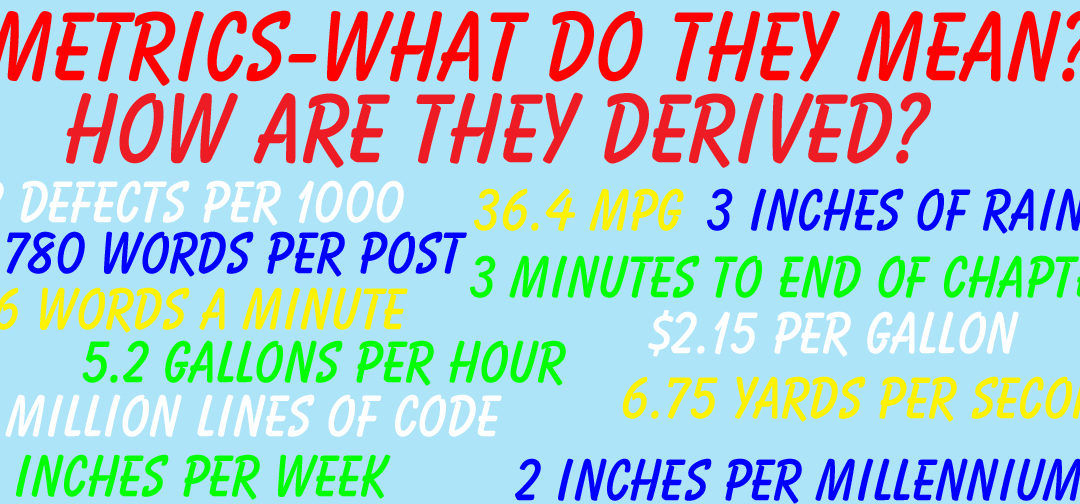I was showing a book in my Kindle library to a fellow engineer this week when he noticed the time to the end of the chapter was two minutes and fifteen seconds. The book was interesting to him but the use of reading metrics was even more interesting, not because of what it meant but because of the difficulty in predicting it. In order to accurately predict how long it will take me to finish the chapter, my Kindle has to have some idea of my reading speed. Since my library is a mix of technical and light fiction material, it’s a safe assumption that the calculations are made on a book by book basis and unless Amazon has developed retina tracking capabilities in their Kindle app, the calculation has to be made based on an average page turn.
Our discussion covered how the metric was calculated, what it actually meant and just how accurate it could be. To engineers, this type of speculation is far more entertaining than the entertainment offered in last night’s television. Okay poor I think this is one of the reasons my wife feels that engineers should not be allowed to gather in groups.
My wife’s opinions aside, metrics are important. These are the numbers that huge decisions are made on and yet far too many people ever question how they were derived and what they mean.
In this year of politics, we’re flooded with the results of opinion polls. We can feel with confidence these polls represent what our fellow victims are thinking or do they. How was the sample group picked? What questions were asked? How can you have confidence in a metric that you don’t understand? In fact, how can you believe it has any meaning outside of polite fiction. Sorry, ignore that comment about polite; I forgot I was talking about politics.
Metrics are the numbers we use to analyze and compare. When I consider buying something on line, I always look at the user reviews. That product review rating is a useful metric as long as real people gave an honest opinion. Since I don’t trust the product reviews, I have to read the reviews to see how many people actually used the product and look for problem trends. In other words, I’m constructing my own metrics for the product.
The tricky thing about metrics is that they are only an indicator but we tend to believe they represent the whole picture. Miles per gallon is a popular metric. It was one of the primary factors I used in buying my car but I’m not surprised that my MPG is not close to what Honda said it would be. I live in Texas and I’m fairly sure Honda wasn’t running the air conditioner full blast when they determined MPG. In fact, they were probably testing with air conditioner off, lights off, radio off and everything else that could be turned off. This is an important metric but unless the driver was me, under Texas conditions, it’s only an indicator.
So what happens when we use metrics to drive the way we work? Many years ago I worked for a company that was having high rework costs. Almost none of the product reached test without having to be reworked. Our management decided to make this a factor in calculating yearend bonuses. Overnight our rework plummeted. It wasn’t until later that we discovered this metric was having the opposite impact on manufacturing time. Since their bonus was affected, every employee was doing double duty as an inspector and correcting the problems on the spot. None of this was being reported because it would affect their bonus, so Engineering never knew about some major production flaws. The people got a good bonus that year, even though our manufacturing costs had almost doubled. Fortunately, someone understood the damage relying solely on the metric caused and it was removed from consideration in next year’s bonus.
Metrics are a great thing and you don’t have to be an engineer to understand or use them but every once in a while it might be worthwhile to ask what does it really mean? I promise, it’s not painful at all and sometimes it’s downright useful, just ask an engineer.
© 2016 – 2019, Byron Seastrunk. All rights reserved.










